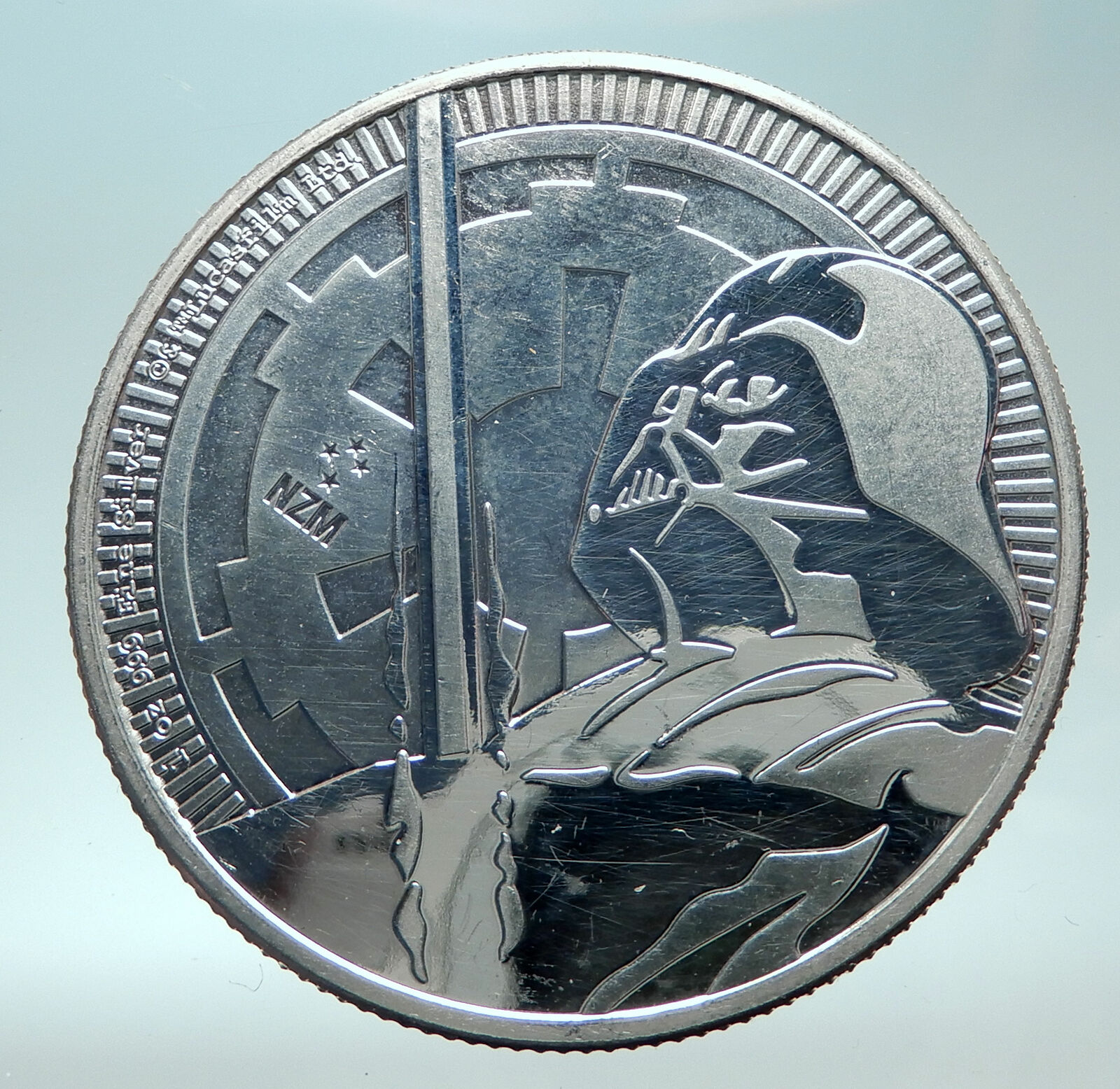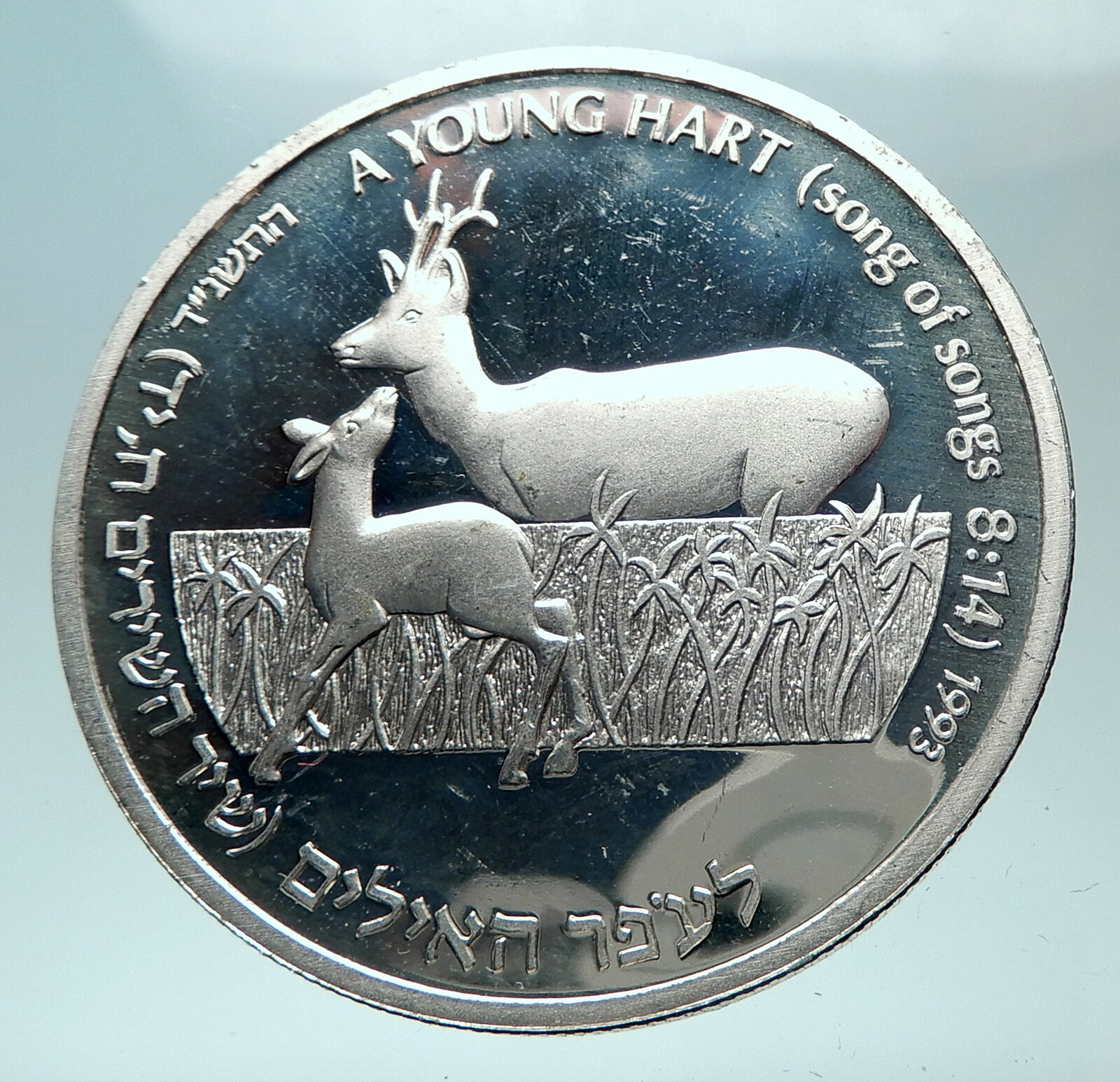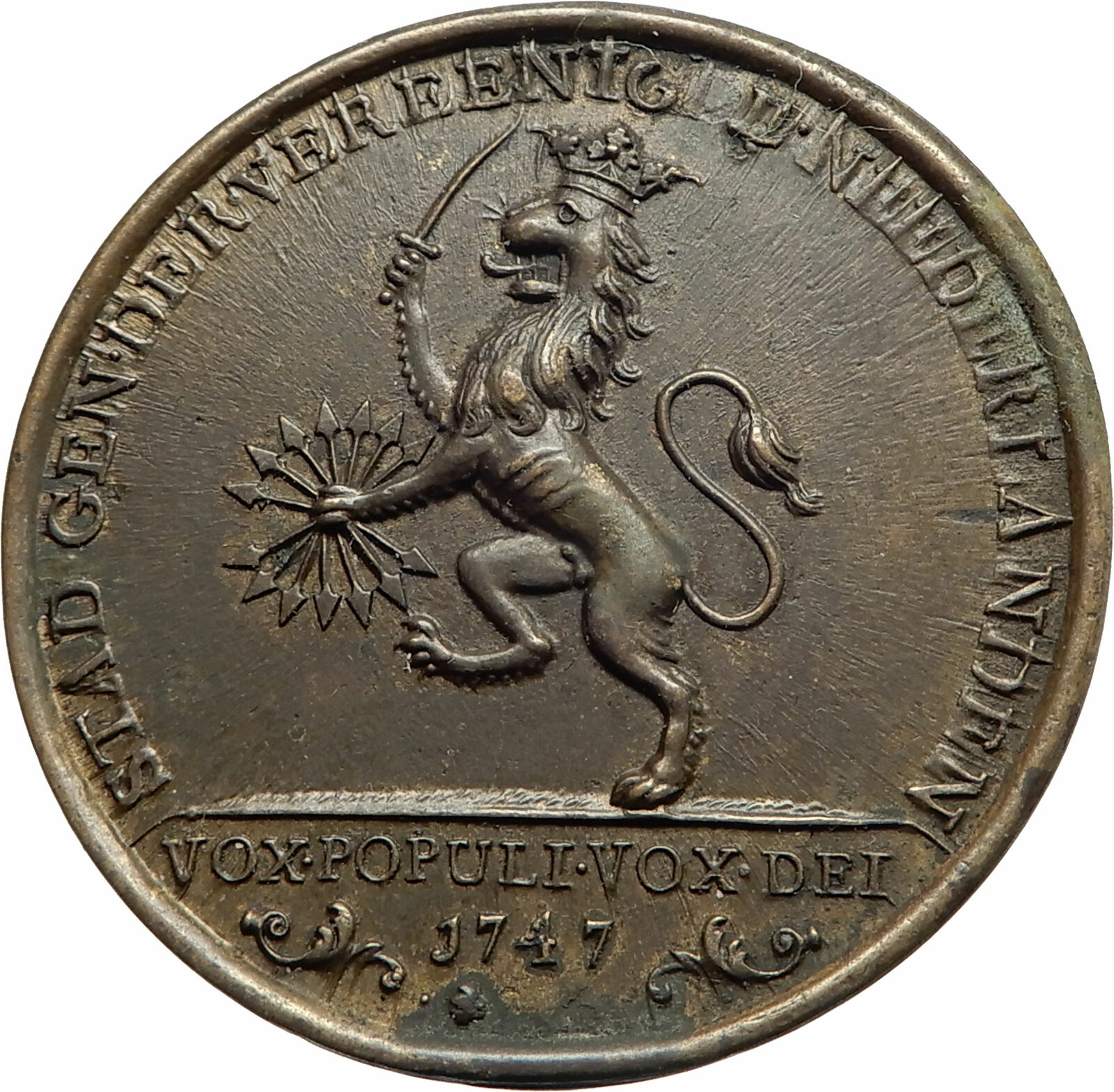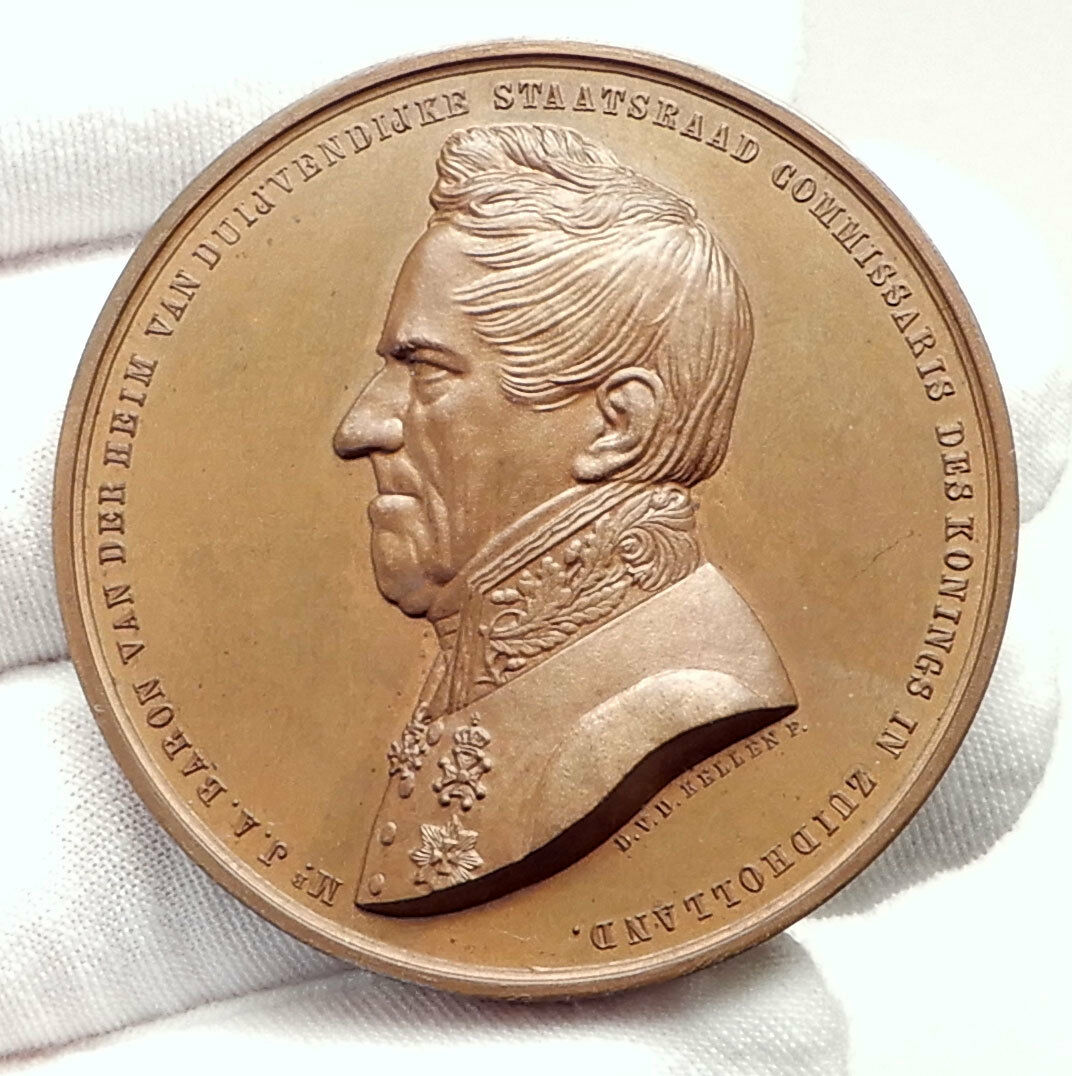|
Germany
– German States. Kingdom of Saxony-Albertine
Albert of Saxony – King: 29 October 1873 – 19 June 1902
1880’s Silver Medal 43mm x 32mm (17.01 grams)
ALBERT KOENIG VON SACHSEN, Albert facing left.
XII. MITTELDEUTSCHES BUNDESSCHIESSEN PLAUEN I/V., Wreath.
You are bidding on the exact item pictured, provided with a Certificate of Authenticity and Lifetime Guarantee of Authenticity.
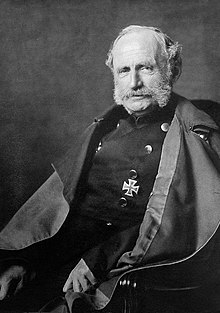 Albert (German: Albert; 23 April 1828 – 19 June 1902) was the King of Saxony and a member of the House of Wettin. Albert (German: Albert; 23 April 1828 – 19 June 1902) was the King of Saxony and a member of the House of Wettin.
He was the eldest son of Prince John (who succeeded his brother Frederick Augustus II on the Saxon throne as King John in 1854) by his wife Amalie Auguste of Bavaria.
Albert had a successful military career leading Saxon troops which participated in the First Schleswig War, the Austro-Prussian War, and the Franco-Prussian War.
Military career
Albert’s education, as usual with German princes, concentrated to a great extent on military matters, but he attended lectures at the University of Bonn. His first experience of warfare came in 1849, when he served as a captain in the First War of Schleswig against Denmark.
When the Austro-Prussian War broke out in 1866, Albert then Crown Prince (German: Kronprinz), took up the command of the Saxon forces opposing the Prussian Army of Prince Friedrich Karl of Prussia. No attempt was made to defend Saxony; the Saxons fell back into Bohemia and effected a junction with the Austrians. They took a prominent part in the battles by which the Prussians forced the line of the Jizera and in the Battle of Jičín. The Crown Prince, however, succeeded in effecting the retreat in good order, and in the decisive Battle of Königgrätz (3 July 1866) he held the extreme left of the Austrian position. The Saxons maintained their post with great tenacity, but were involved in the disastrous defeat of their allies.
During these operations the Crown Prince won the reputation of a thorough soldier; after peace was made and Saxony had entered the North German Confederation, he gained the command of the Saxon army, which had now become the XII army corps of the North German army, and in this position carried out the necessary re-organisation. He proved a firm adherent of the Prussian alliance. On the outbreak of the Franco-Prussian War in 1870 he again commanded the Saxons, who were included in the 2nd army under Prince Friedrich Karl of Prussia, his old opponent. At the Battle of Gravelotte, they formed the extreme left of the German army, and with the Prussian Guard carried out the attack on St Privat, the final and decisive action in the battle.
In the re-organisation of the army which accompanied the march towards Paris the Crown Prince gained a separate command over the 4th army (Army of the Meuse) consisting of the Saxons, the Prussian Guard corps, and the IV (Prussian Saxony) corps. He was succeeded in command of the XII corps by his brother Prince George, who had served under him in Bohemia.
Albert took a leading part in the operations which preceded the battle of Sedan, the 4th army being the pivot on which the whole army wheeled round in pursuit of Mac-Mahon; and the actions of Buzancy and Beaumont on 29 and 30 August 1870 were fought under his direction; in the Battle of Sedan itself (1 September 1870), with the troops under his orders, Albert carried out the envelopment of the French on the east and north.
Albert’s conduct in these engagements won for him the complete confidence of the army, and during the Siege of Paris his troops formed the north-east section of the investing force. During the siege he blocked French attempts to break out of the encirclement at Le Bourget and Villiers. After the conclusion of the Treaty of Frankfurt (1871), he was left in command of the German army of occupation, a position which he held till the fall of the Paris Commune. On the conclusion of peace he was made an inspector-general of the army and a field marshal.
On the death of his father King John on 29 October 1873, the Crown Prince succeeded to the throne as King Albert. His reign proved uneventful, and he took little public part in politics, devoting himself to military affairs, in which his advice and experience were of the greatest value, not only to the Saxon corps but to the German army in general. During his reign, the Saxon monarchy became constitutional.
In the 1870s, Albert initiated the construction of a Dresden suburb, the Albertstadt. At that time it was the largest garrison in Germany. Near the former suburb other buildings and places still bear his name: the Albertbrücke, the Alberthafen, the Albertplatz and the Albertinum.
In 1879, he initiated the re-construction of the Saint Afra School in Meissen. In 1897, he was appointed arbitrator between the claimants for the Principality of Lippe.
 Saxony (German: Sachsen, Upper Sorbian: Sakska), officially the Free State of Saxony, Upper Sorbian: Swobodny stat Sakska), is a landlocked federal state of Germany, bordering the federal states of Brandenburg, Saxony Anhalt, Thuringia, and Bavaria, as well as the countries of Poland (Lower Silesian and Lubusz Voivodeships) and the Czech Republic (Karlovy Vary, Liberec, and Ústí nad Labem Regions). Its capital is Dresden, and its largest city is Leipzig. Saxony (German: Sachsen, Upper Sorbian: Sakska), officially the Free State of Saxony, Upper Sorbian: Swobodny stat Sakska), is a landlocked federal state of Germany, bordering the federal states of Brandenburg, Saxony Anhalt, Thuringia, and Bavaria, as well as the countries of Poland (Lower Silesian and Lubusz Voivodeships) and the Czech Republic (Karlovy Vary, Liberec, and Ústí nad Labem Regions). Its capital is Dresden, and its largest city is Leipzig.
Saxony is the tenth largest of Germany’s sixteen states, with an area of 18,413 square kilometres (7,109 sq mi), and the sixth most populous, with 4 million people.
 The history of the state of Saxony spans more than a millennium. It has been a medieval duchy, an electorate of the Holy Roman Empire, a kingdom, and twice a republic. The history of the state of Saxony spans more than a millennium. It has been a medieval duchy, an electorate of the Holy Roman Empire, a kingdom, and twice a republic.
The area of the modern state of Saxony should not be confused with Old Saxony, the area inhabited by Saxons. Old Saxony corresponds roughly to the modern German states of Lower Saxony, Saxony-Anhalt, and the Westphalian part of North Rhine-Westphalia.
  Germany, officially the Federal Republic of Germany is a federal parliamentary republic in western-central Europe. It includes 16 constituent states and covers an area of 357,021 square kilometres (137,847 sq mi) with a largely temperate seasonal climate. Its capital and largest city is Berlin. With 81 million inhabitants, Germany is the most populous member state in the European Union. After the United States, it is the second most popular migration destination in the world. Germany, officially the Federal Republic of Germany is a federal parliamentary republic in western-central Europe. It includes 16 constituent states and covers an area of 357,021 square kilometres (137,847 sq mi) with a largely temperate seasonal climate. Its capital and largest city is Berlin. With 81 million inhabitants, Germany is the most populous member state in the European Union. After the United States, it is the second most popular migration destination in the world.
Various Germanic tribes have occupied northern Germany since classical antiquity. A region named Germania was documented before 100 CE. During the Migration Period the Germanic tribes expanded southward. Beginning in the 10th century, German territories formed a central part of the Holy Roman Empire. During the 16th century, northern German regions became the centre of the Protestant Reformation.
The rise of Pan-Germanism inside the German Confederation resulted in the unification of most of the German states in 1871 into the Prussian-dominated German Empire. After World War I and the German Revolution of 1918-1919, the Empire was replaced by the parliamentary Weimar Republic. The establishment of the Third Reich in 1933 led to World War II and the Holocaust. After 1945, Germany split into two states, East Germany and West Germany. In 1990, the country was reunified.
 In the 21st century, Germany is a great power and has the world’s fourth-largest economy by nominal GDP, as well as the fifth-largest by PPP. As a global leader in several industrial and technological sectors, it is both the world’s third-largest exporter and importer of goods. Germany is a developed country with a very high standard of living sustained by a skilled and productive society. It upholds a social security and universal health care system, environmental protection and a tuition free university education. In the 21st century, Germany is a great power and has the world’s fourth-largest economy by nominal GDP, as well as the fifth-largest by PPP. As a global leader in several industrial and technological sectors, it is both the world’s third-largest exporter and importer of goods. Germany is a developed country with a very high standard of living sustained by a skilled and productive society. It upholds a social security and universal health care system, environmental protection and a tuition free university education.
Germany was a founding member of the European Union in 1993. It is part of the Schengen Area, and became a co-founder of the Eurozone in 1999. Germany is a member of the United Nations, NATO, the G8, the G20, and the OECD. The national military expenditure is the 9th highest in the world. Known for its rich cultural history, Germany has been continuously the home of influential artists, philosophers, musicians, sportsmen, entrepreneurs, scientists and inventors.
|





 Albert (German: Albert; 23 April 1828 – 19 June 1902) was the King of Saxony and a member of the House of Wettin.
Albert (German: Albert; 23 April 1828 – 19 June 1902) was the King of Saxony and a member of the House of Wettin.  Saxony (German: Sachsen, Upper Sorbian: Sakska), officially the Free State of Saxony, Upper Sorbian: Swobodny stat Sakska), is a landlocked federal state of Germany, bordering the federal states of Brandenburg, Saxony Anhalt, Thuringia, and Bavaria, as well as the countries of Poland (Lower Silesian and Lubusz Voivodeships) and the Czech Republic (Karlovy Vary, Liberec, and Ústí nad Labem Regions). Its capital is Dresden, and its largest city is Leipzig.
Saxony (German: Sachsen, Upper Sorbian: Sakska), officially the Free State of Saxony, Upper Sorbian: Swobodny stat Sakska), is a landlocked federal state of Germany, bordering the federal states of Brandenburg, Saxony Anhalt, Thuringia, and Bavaria, as well as the countries of Poland (Lower Silesian and Lubusz Voivodeships) and the Czech Republic (Karlovy Vary, Liberec, and Ústí nad Labem Regions). Its capital is Dresden, and its largest city is Leipzig.  The history of the state of Saxony spans more than a millennium. It has been a medieval duchy, an electorate of the Holy Roman Empire, a kingdom, and twice a republic.
The history of the state of Saxony spans more than a millennium. It has been a medieval duchy, an electorate of the Holy Roman Empire, a kingdom, and twice a republic. 
 Germany, officially the Federal Republic of Germany is a federal parliamentary republic in western-central Europe. It includes 16 constituent states and covers an area of 357,021 square kilometres (137,847 sq mi) with a largely temperate seasonal climate. Its capital and largest city is Berlin. With 81 million inhabitants, Germany is the most populous member state in the European Union. After the United States, it is the second most popular migration destination in the world.
Germany, officially the Federal Republic of Germany is a federal parliamentary republic in western-central Europe. It includes 16 constituent states and covers an area of 357,021 square kilometres (137,847 sq mi) with a largely temperate seasonal climate. Its capital and largest city is Berlin. With 81 million inhabitants, Germany is the most populous member state in the European Union. After the United States, it is the second most popular migration destination in the world. In the 21st century, Germany is a great power and has the world’s fourth-largest economy by nominal GDP, as well as the fifth-largest by PPP. As a global leader in several industrial and technological sectors, it is both the world’s third-largest exporter and importer of goods. Germany is a developed country with a very high standard of living sustained by a skilled and productive society. It upholds a social security and universal health care system, environmental protection and a tuition free university education.
In the 21st century, Germany is a great power and has the world’s fourth-largest economy by nominal GDP, as well as the fifth-largest by PPP. As a global leader in several industrial and technological sectors, it is both the world’s third-largest exporter and importer of goods. Germany is a developed country with a very high standard of living sustained by a skilled and productive society. It upholds a social security and universal health care system, environmental protection and a tuition free university education.

